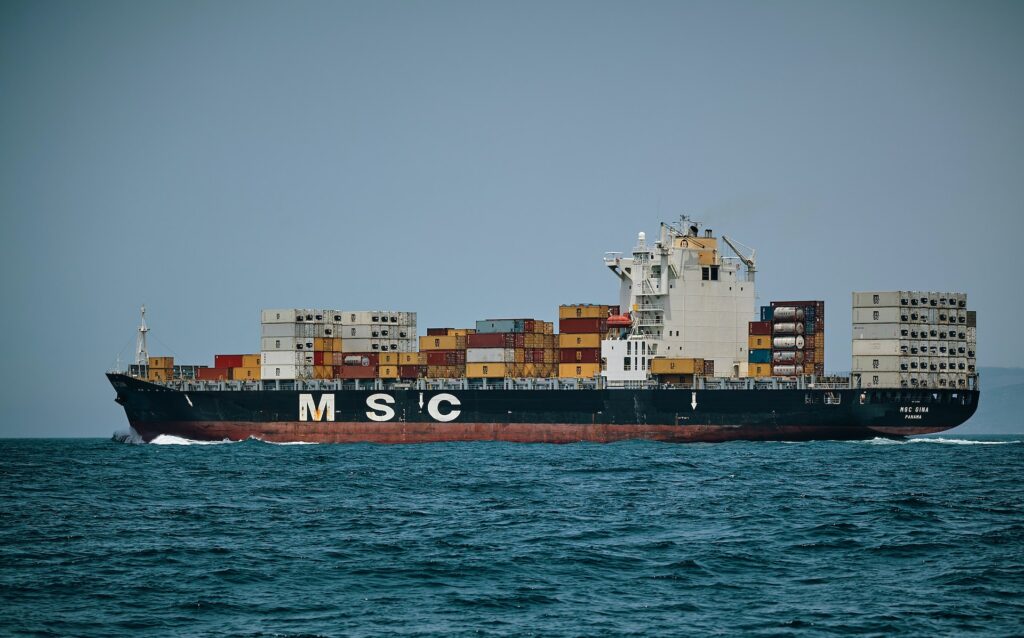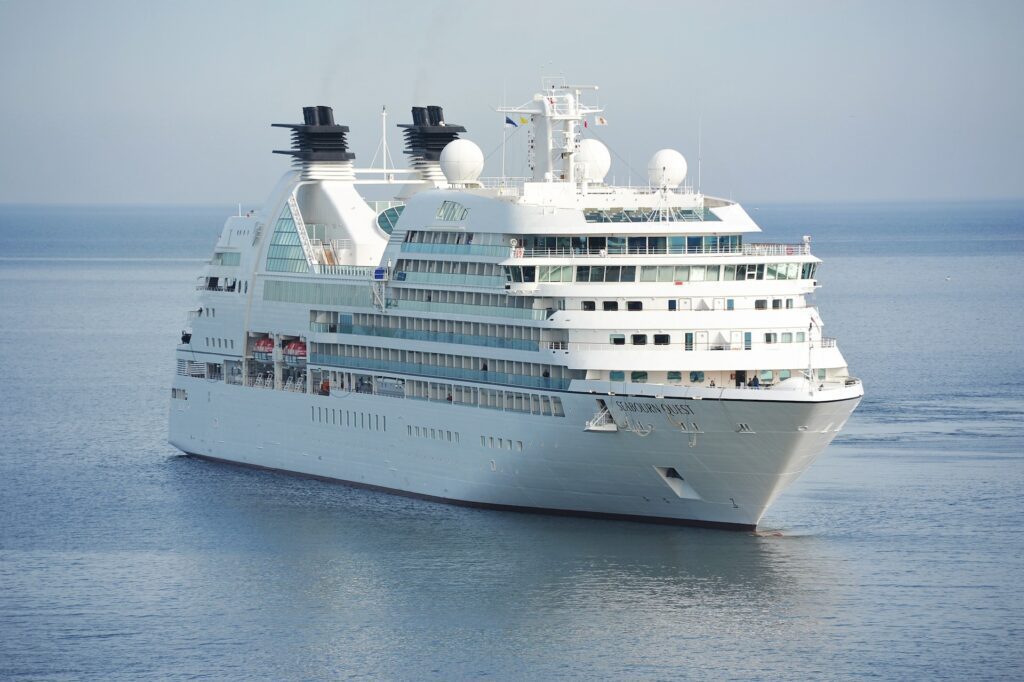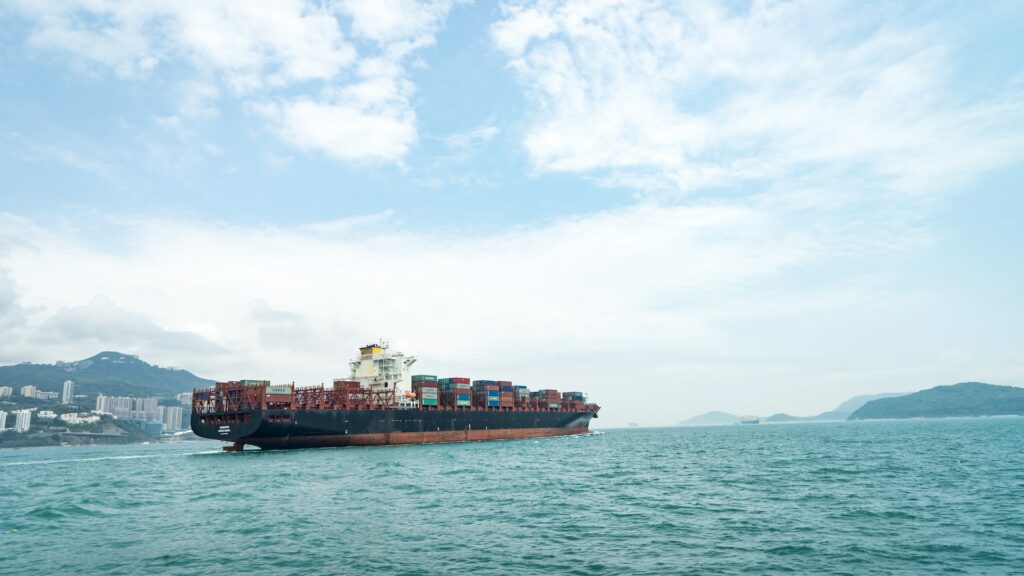06/06/2023 | Environmental | 8 MINUTE READ
Clearing the Air and the Seas: The Game-changing Technology of Marine Scrubbers

Among the most significant contributors to pollution in marine waters are the engines on the ships that are used in the delivery industry. In recent years, scrubbers have been installed on marine vessels to get rid of particulate matter and harmful substances in the exhaust gases that are produced from marine engine combustion processes. These systems provide a high level of pollution control that’s more cost-effective than previous solutions.
When you install a scrubber on a marine vessel, it can treat the exhaust from boilers, engines, and auxiliary engines to make sure that toxic chemicals aren’t introduced to the environment. If these chemicals are found in high concentrations, they can damage the environment and worsen human health.
Scrubbers have been used more often in recent years because of the global limits that the International Maritime Organization (IMO) placed on sulfur in exhaust gases. These systems help vessels remain compliant with the latest regulations. It’s believed that additional guidelines will be introduced to improve sustainability in the years to come, which will make the revolutionary technology of marine scrubbers even more important. In this article, you’ll learn how this technology works and how it can be applied in a variety of situations.

Introduction
A marine scrubber is a type of exhaust gas cleaning system that’s designed to eliminate smaller contaminants and harmful materials like nitrogen oxide and sulfur oxide. Before this technology began to be used by the shipping industry, the exhaust created by marine vessels would be sent into the atmosphere, which caused considerable damage to human health as well as the health of the planet. The introduction of scrubbers has allowed for around 98% of all SOx emissions to be removed.
How Marine Scrubbers Work
Marine scrubbers use seawater for the scrubbing substance, which means that the entire process occurs without using harmful chemicals. While there are several different types of marine scrubbers, all of them produce similar effects. The main components of a marine scrubber include a scrubber tower, a scrubber water treatment unit, and a sludge handling facility.
When the gas stream from the engine’s combustion process is sent through a scrubber tower, the gases will be scrubbed with water to effectively neutralize them. Closed-loop scrubbers add substances like caustic soda or sodium hydroxide to alkaline water to make sure that nearly all harmful substances in the exhaust stream are rendered inert.
The water treatment unit that’s housed in the scrubber is meant to further treat the exhaust stream once the scrubber tower completes the initial treatment. Even though nearly all sulfur oxide emissions are eradicated, the first treatment process produces scrubber wash water that’s dirty and contaminated.
Closed-loop scrubbers need to be outfitted with a water treatment unit to remove contaminants from the scrubber water. When using this unit, you’ll be able to meet the scrubber water discharge limits in regards to temperature, turbidity, and pH.
As for the sludge handling facility, closed-loop scrubbers will keep the scrubber sludge to make sure that it’s safely disposed of onshore. To accommodate this process, marine vessels should be outfitted with suitable sludge handling facilities. These facilities allow polluted sludge to be dewatered, which turns the substance into a dry and solid cake for easy disposal. The most affordable tool that you can use for the dewatering process is a filter press.
Before you install a marine scrubber on your vessel, consider the types of scrubbers that are available to you. For instance, an open-loop scrubber is a basic system that treats the exhaust stream with alkaline seawater. If the seawater is acidic, it won’t produce the intended results. The amount of seawater that’s required for this process depends on how large the engine is and the total power it outputs.
Even though this system has proven to be highly effective, it comes with high pumping requirements, which means that large amounts of seawater are used to treat exhaust gases. If the seawater that’s used for scrubbing has enough alkalinity in it, an open-loop system will be sufficient. Otherwise, other systems are needed.
Closed-loop scrubber systems use the same basic principals as open-loop systems. The main difference is that fresh water is used alongside one or more chemicals to serve as the scrubbing media. During this process, the sulfur oxide that’s present in the exhaust gas stream will be converted into sodium sulfate, which is harmless. The wash water is then sent into a process tank to be cleaned, after which it will be reused by the closed-loop system.
Ships are capable of carrying fresh water in large tanks or producing the necessary water via freshwater generators, which should be available on the vessel. On occasion, some of the wash water is removed from the system and placed into holding tanks, which is where additional fresh water is added. This process ensures that sodium sulfate doesn’t accumulate too much.
Closed-loop systems use half the amount of wash water when compared to open-loop systems. However, these systems use more tanks, which extend to a buffer tank, a storage tank for temperature regulation, and a holding tank. Since closed-loop systems use a continuous process, the maintenance requirements are low.
While closed-loop systems are becoming increasingly common among vessels that are attempting to maintain compliance with emission regulations, another alternative to open-loop systems are hybrid scrubber systems. A hybrid scrubber is designed to accommodate closed-loop and open-loop configurations when installed on a marine vessel. When the ship is at sea, the scrubber will run in open-loop mode. The system will then switch to closed-loop mode in ports. Even though a hybrid system has high upfront costs, it simplifies the process of adhering to international regulations.

Advantages of Marine Scrubbers
One benefit of using marine scrubbers is the cost-effectiveness compared to alternative technologies. Since stricter IMO regulations were made, ships were tasked with using fuel that had low concentrations of sulfur. Even though this fuel is better for the environment, it’s also much more expensive.
By installing a marine scrubber on board, it’s possible to continue using less expensive fuel with high sulfur content. The scrubbers allow emissions to be treated before they enter the environment. While the upfront costs for a marine scrubber can be high, the fuel savings should cover these costs relatively quickly.
These systems also have a lower environmental impact compared to the alternatives. Even ships that use fuel with low sulfur content produce more sulfur oxide emissions when compared to ships that are outfitted with marine scrubbers. Having a marine scrubber installed means that you’ll do your part to protect the environment.
As mentioned previously, these scrubbers also help ships comply with emissions regulations. Before the International Maritime Organization introduced a cap on the amount of sulfur that could be present in exhaust gas, around 10% of all sulfur oxide emissions were caused by the shipping industry. While the new regulations are strict, marine scrubbers ensure compliance.
Challenges of Marine Scrubbers
Even though marine scrubbers are highly advantageous and useful within the shipping industry, there are a few challenges that ship owners must effectively navigate. For one, the initial investment can be anywhere from $2-$6 million when including installation costs. Closed-loop systems can be used without requiring a high amount of maintenance. However, operation and maintenance costs will still add on to your total expenses.
Another issue is that scrubber waste needs to be disposed of. While dewatering the waste is highly effective, it means that a sludge handling facility needs to be installed on your ship.

Case Studies
There have been several examples of how marine scrubbers have significantly improved the shipping industry, which include:
- A maritime consultancy firm known as Clarksons found that vessels equipped with marine scrubbers earned around $14,000-$20,000 per day during a voyage.
- In dry bulk shipping, vessels without scrubbers earned $22,000 per day. However, vessels with scrubbers earned the same amount while also saving just over $22,000 in fuel costs, which means that their profits were doubled.
- In large container ships that are over 12,000 TEUs, nearly 60% have scrubbers on board. This number is expected to rise over the next decade.
Future Outlook
Marine scrubber technology is highly advanced and solves problems that most other technologies and systems have been unable to fix. However, there’s still a large potential for further development and innovation in scrubber technology in the years to come. For instance, closed-loop systems may be able to operate without the need for chemicals. It’s also possible that the size of these systems could be further reduced to save space on marine vessels. Treatment of exhaust gases may become more effective as well.
The use of marine scrubbers is also expected to play a role in helping the industry reach decarbonization goals. The purpose of decarbonization is to reduce carbon dioxide emissions by using low-carbon power sources. Marine scrubbers are being used as an interim technique until cleaner choices are found.
Conclusion
Marine scrubbers are experiencing widespread adoption among larger vessels that are being tasked with cleaning exhaust gases before sulfur oxide and other harmful chemicals are released into the atmosphere. Despite the high costs of having these scrubbers installed on your ship, you’ll save thousands of dollars every day in fuel costs.
These systems also give you the ability to adhere to international exhaust gas regulations. It’s highly recommended that you consider scrubbers as one part of a more comprehensive emissions reduction strategy. By reducing emissions, your ship will protect the environment and will be prepared for any additional regulations that the International Maritime Organization creates in the future.
Posted by Dominic O'Donnell on June 6, 2023
Sensorex is a global leader in the design and manufacture of quality sensors for water quality and process applications. The company offers more than 2000 sensor packages for pH, ORP, conductivity, dissolved oxygen, free chlorine, chlorine dioxide, UV transmittance and other specialty measurements, as well as a full line of sensor accessories and transmitters. Its expert technical support engineers solve analytical sensor challenges with custom designs and off the shelf products.




